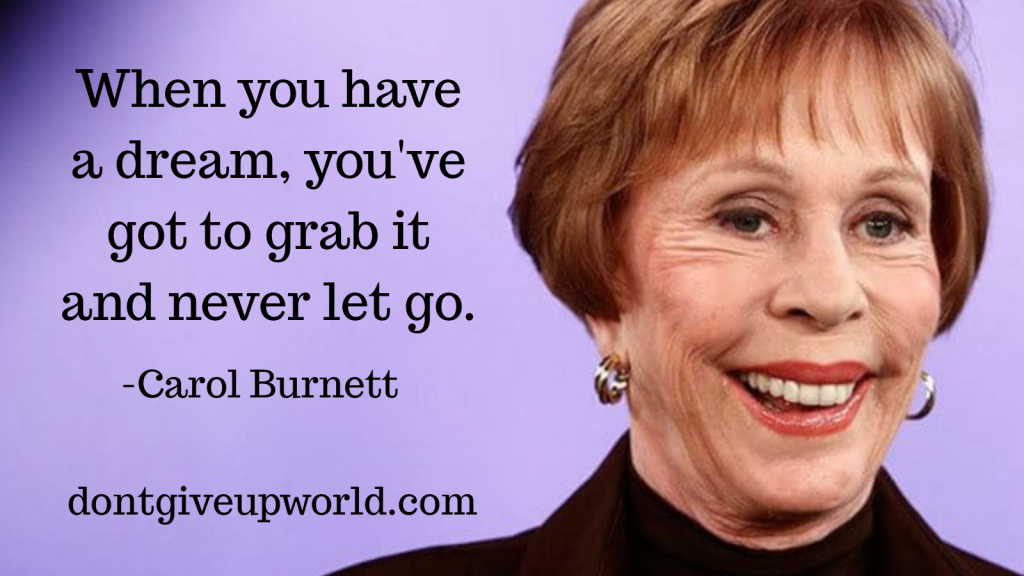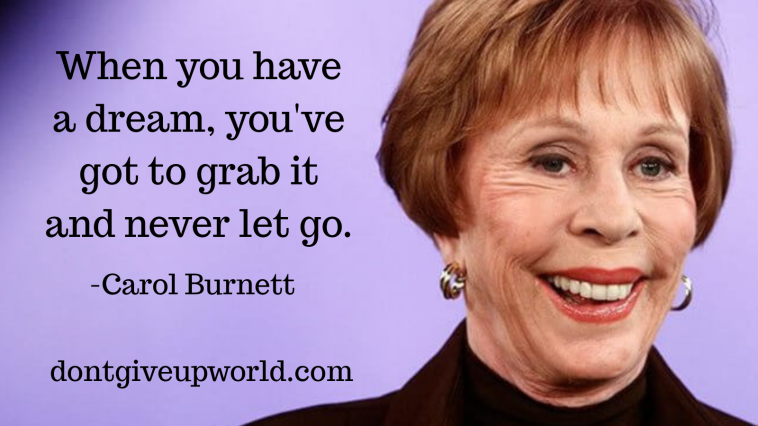
When you have a dream, you’ve got to grab it and never let go.
Carol Burnett
Quote on never let go on dream by Carol Burnett
Chasing Stardust: A Tale of Unyielding Dreams
Introduction
In the quaint village of Willowbrook, nestled among rolling hills, lived a young girl named Eliza. Her eyes sparkled with dreams—dreams that stretched beyond the horizon, like threads connecting her to distant constellations. The quote echoed in her heart: “When you have a dream, you’ve got to grab it and never let go.” Eliza clung to those words, her fingers brushing stardust.
The Whispering Woods
Eliza’s dream was simple yet profound: to become an astronomer. She spent nights lying on dew-kissed grass, tracing the Milky Way with her gaze. The villagers chuckled, calling her the “Stargazer.” But Eliza knew that dreams were more than whims—they were the compass guiding her soul.
The Skeptics
As Eliza grew, so did her dream. She devoured books on celestial bodies, charting their courses. Yet, the path to the observatory was strewn with doubts. Her parents worried—could a girl from Willowbrook truly reach the stars? But Eliza’s resolve burned brighter than any comet.
The Telescope
One frosty morning, Eliza discovered an old telescope in the attic. Its brass tubes held secrets—the whispers of astronomers long gone. She polished the lenses, adjusting them to focus on Jupiter’s moons. The quote danced in her mind: “Never let go.” Eliza vowed to see beyond the mundane.
The Scholar’s Journey
Eliza’s journey took her to the bustling city of Astoria. She enrolled in the Academy of Celestial Sciences, her heart racing as she stepped into the observatory dome. The night sky unfurled—a cosmic canvas. Eliza’s fingers trembled as she adjusted the telescope. She had grabbed her dream; now she would chase it across galaxies.
The Nebula’s Song
Years passed. Eliza deciphered star clusters, named comets, and danced with Orion. But her greatest discovery lay in the Orion Nebula—a celestial nursery birthing new stars. The quote echoed anew: “Never let go.” Eliza realized that dreams weren’t static; they evolved, like nebulae swirling into existence.
The Cosmic Equation
Eliza’s research led her to Dr. Samuel Hale, a reclusive astrophysicist. His equations bridged time and space. Together, they unraveled the fabric of the universe. Yet, Dr. Hale warned: “Dreams can be black holes, consuming us.” Eliza pondered—was there a balance between holding tight and letting go?
The Event Horizon
On a moonless night, Eliza stood at the observatory’s edge. The quote whispered: “Never let go.” But she gazed beyond the stars, into the void. Dr. Hale’s words echoed. Eliza wondered if her dream had become an event horizon—a point of no return. Could she release it, like a comet streaking across infinity?
The Cosmic Dance
Eliza made her choice. She wrote her thesis—a symphony of quarks and pulsars. As she defended it, the quote resounded: “Never let go.” But she added a coda: “Yet sometimes, dreams need orbits. They must swing close and then veer away, gathering momentum.” Eliza had learned to hold stardust gently.
Conclusion
Eliza became an acclaimed astronomer, mapping constellations and mentoring young stargazers. Her Meta description read: “Eliza’s unyielding pursuit of the cosmos—where dreams collide with infinity.” And so, dear reader, remember: “When you have a dream, you’ve got to grab it and never let go.” But also, allow it to pirouette through the cosmos, leaving stardust in its wake.
For More Info Click Here
More Such Article Click Here





GIPHY App Key not set. Please check settings